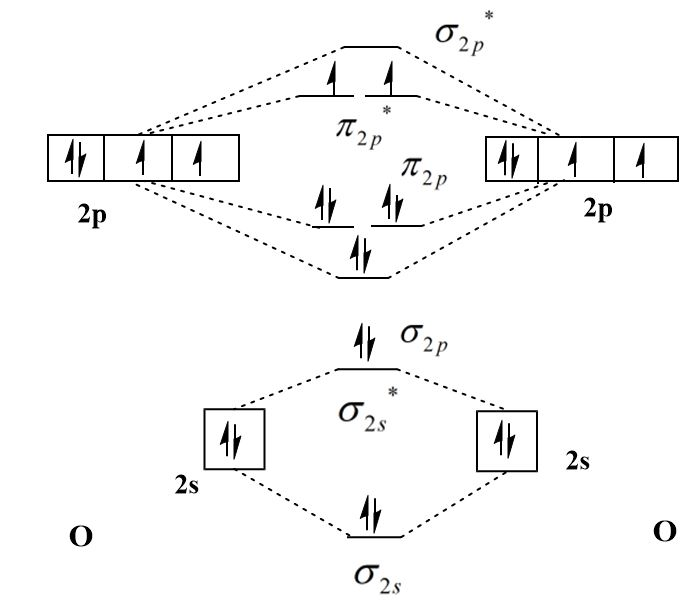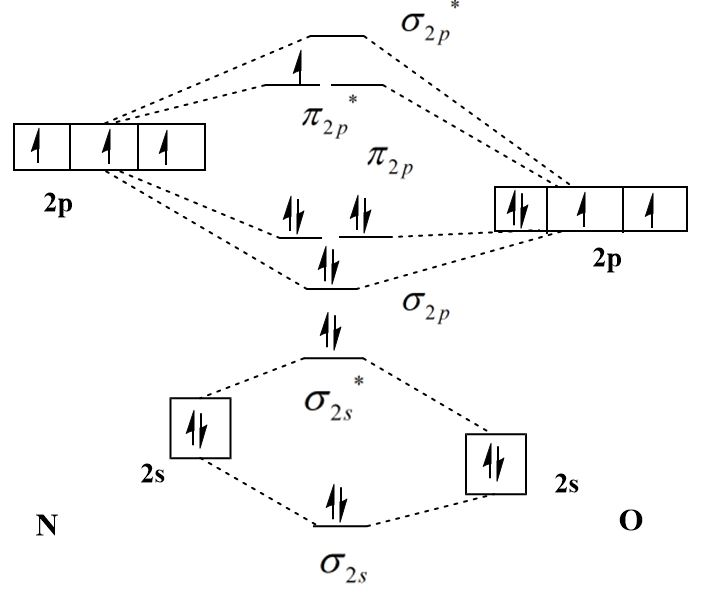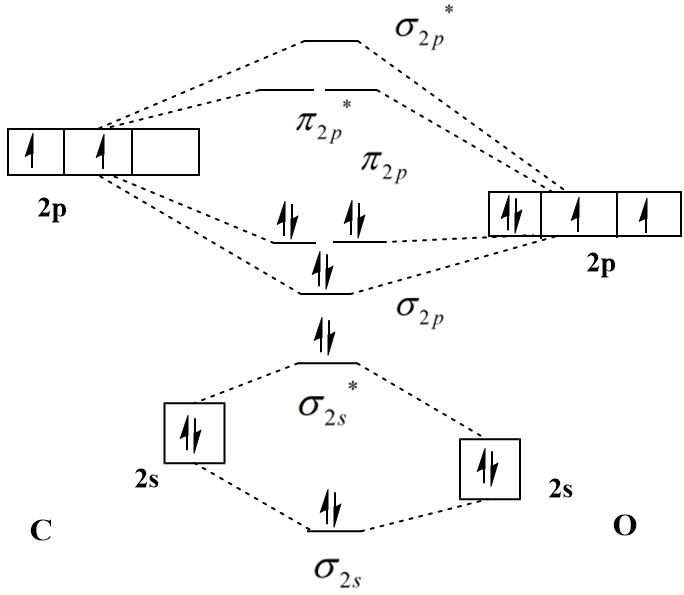
By writing molecular orbital configuration for
Answer
404.4k+ views
Hint: The bond order is a measure of the number of bonds that exist between two atoms and can be calculated by multiplying the difference of number of electrons present in bonding and antibonding molecular orbitals by half.
Complete answer:
The placement of electrons in bonding or antibonding molecular orbitals can be determined by drawing the molecular orbital diagram of the molecule. This diagram is the virtual representation of the linear combination of atomic orbitals that combine to give molecular orbitals. The molecular orbital configuration can be written with the help of the following diagrams.
The molecular orbital diagram of oxygen molecule

The molecular orbital diagram of

The molecular orbital diagram of

The molecular orbital configuration of oxygen molecule
The molecular orbital configuration of
The molecular orbital configuration of
The following formula can be used to calculate the bond order:
The number of bonding electrons in oxygen molecule is eight and the number of antibonding electrons is four therefore the bond of oxygen molecule is:
There are eight bonding electron in nitrogen monoxide and three antibonding electrons therefore the bond order of nitrogen monoxide molecule is:
The number of bonding electrons in carbon monoxide is eight and that of antibonding electrons is two and therefore the bond order is:
The presence of an unpaired electron in the highest occupied molecular orbital (HOMO) of
Note:
The atomic orbitals are not placed along the same horizontal axis if the atoms involved have an electronegativity difference. The atomic orbitals of oxygen atoms always occupy relatively lower positions due to its higher electronegativity as compared to carbon and nitrogen atoms.
Complete answer:
The placement of electrons in bonding or antibonding molecular orbitals can be determined by drawing the molecular orbital diagram of the molecule. This diagram is the virtual representation of the linear combination of atomic orbitals that combine to give molecular orbitals. The molecular orbital configuration can be written with the help of the following diagrams.
The molecular orbital diagram of oxygen molecule

The molecular orbital diagram of

The molecular orbital diagram of

The molecular orbital configuration of oxygen molecule
The molecular orbital configuration of
The molecular orbital configuration of
The following formula can be used to calculate the bond order:
The number of bonding electrons in oxygen molecule is eight and the number of antibonding electrons is four therefore the bond of oxygen molecule is:
There are eight bonding electron in nitrogen monoxide and three antibonding electrons therefore the bond order of nitrogen monoxide molecule is:
The number of bonding electrons in carbon monoxide is eight and that of antibonding electrons is two and therefore the bond order is:
The presence of an unpaired electron in the highest occupied molecular orbital (HOMO) of
Note:
The atomic orbitals are not placed along the same horizontal axis if the atoms involved have an electronegativity difference. The atomic orbitals of oxygen atoms always occupy relatively lower positions due to its higher electronegativity as compared to carbon and nitrogen atoms.
Recently Updated Pages
Master Class 9 General Knowledge: Engaging Questions & Answers for Success

Master Class 9 English: Engaging Questions & Answers for Success

Master Class 9 Science: Engaging Questions & Answers for Success

Master Class 9 Social Science: Engaging Questions & Answers for Success

Master Class 9 Maths: Engaging Questions & Answers for Success

Class 9 Question and Answer - Your Ultimate Solutions Guide

Trending doubts
Give 10 examples of unisexual and bisexual flowers

Draw a labelled sketch of the human eye class 12 physics CBSE

Differentiate between homogeneous and heterogeneous class 12 chemistry CBSE

Differentiate between insitu conservation and exsitu class 12 biology CBSE

What are the major means of transport Explain each class 12 social science CBSE

What is the difference between resemblance and sem class 12 social science CBSE




